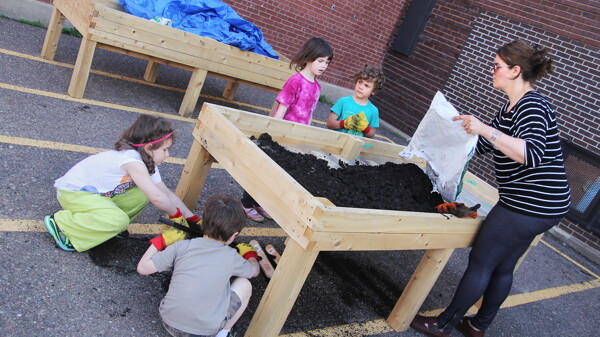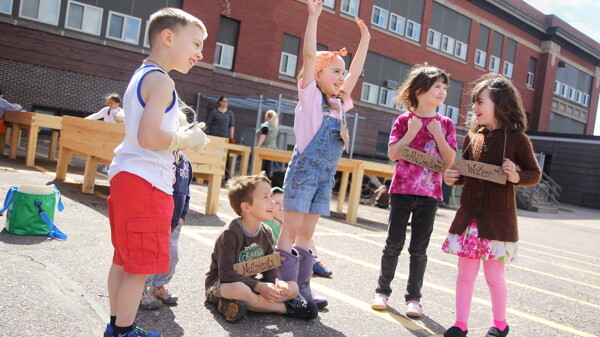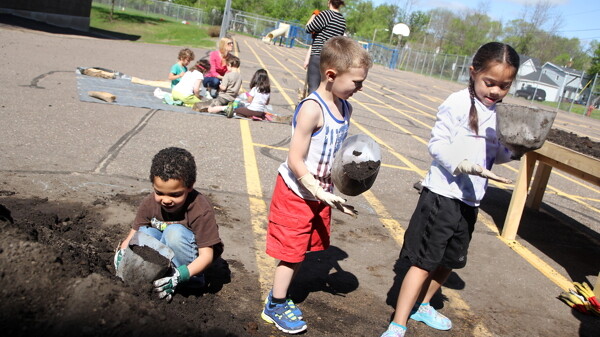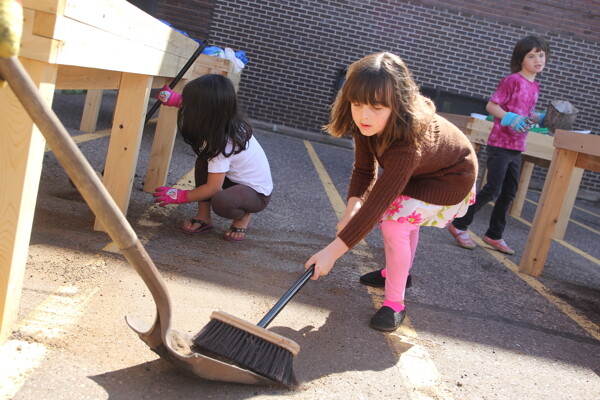How Does Your Garden Grow?
for these Montessori students, it grows at school
Dustin Hahn, photos by Andrea Paulseth |

in Eau Claire help prepare raised garden beds for planting.
The Chippewa Valley Montessori Charter School is inside an old building (the former Lincoln Elementary on Cameron Street), with few areas of interest for students on school grounds. As a result of this, parent and teacher volunteers came together a number of years ago to create a plan to overhaul the outdoor environment. Because that plan is going to take some time to implement, Erica Zerr and other parents began discussing a short-term addition. The solution they decided on last October was to create a school garden that students, parents, and staff could all be involved with.
The garden was chosen because the group wanted to create something that would reflect the school itself. “Montessori is a hands-on education model where students complete tasks, free to move around, from start to finish, without much dictation – more led by their own curiosity and imagination,” Zerr said. The garden committee also came up with a loose curriculum to coincide with the garden. This will connect the classroom work – learning about plant biology, for instance – to the garden outside, where they will learn hands-on ways to make the plants grow. The garden will not use fertilizers or pesticides. By relying on composting, the students will learn why it is important to not pollute the food or the soil they grow it in. Because of this, Zerr believes that the children will gain a sense of global awareness when it comes to food. “The ultimate dream for our school garden is to have it be a place where children can engage the planet and their environment in a hands-on way,” Zerr said.

Thanks to monetary donations from various parents, Mayo Clinic Health System, and Just Local Foods, they were able to start the project as soon as the weather warmed up. The school also received discounted prices from Lyman’s Lumber and Tin Roof Garden Center. After seven months of planning, students got together with parents and staff on the first Saturday in May to build seven raised gardens. By the time you read this, the beds will be full of dirt and seeds, with hoses and kids at the ready to make the garden grow. The garden will most likely only grow long-season plants, such as carrots, potatoes, cabbage, melons, and peppers. During the summer, the garden will be taken care of by volunteer families. By planting in this way, the students will be able to come back to school in the fall to fully-grown veggies which they will be able to harvest, and of course, eat. “Hopefully a kid who has never tried a radish or a purple carrot or real popcorn will have a chance to try something new and to take pride in the process of producing his or her own food,” Zerr said.




















